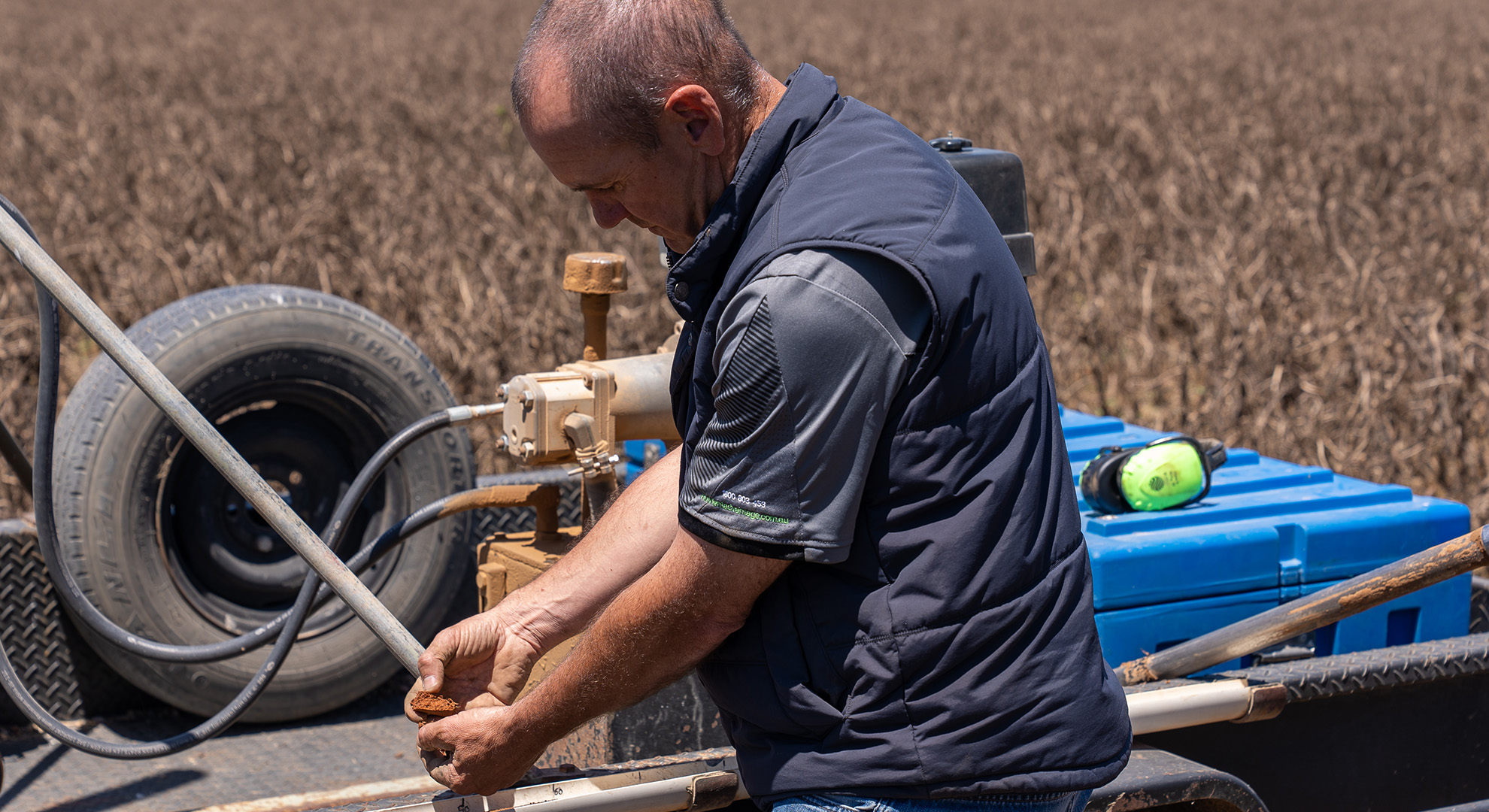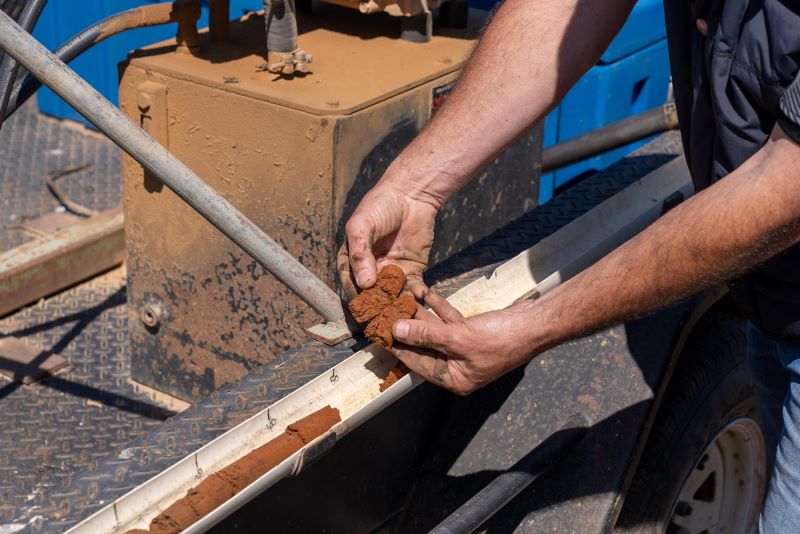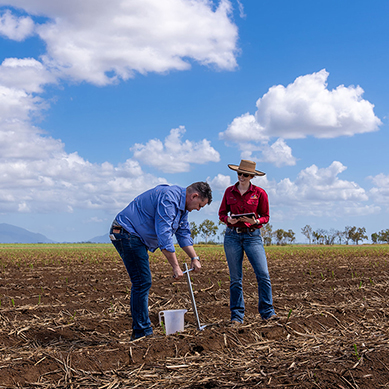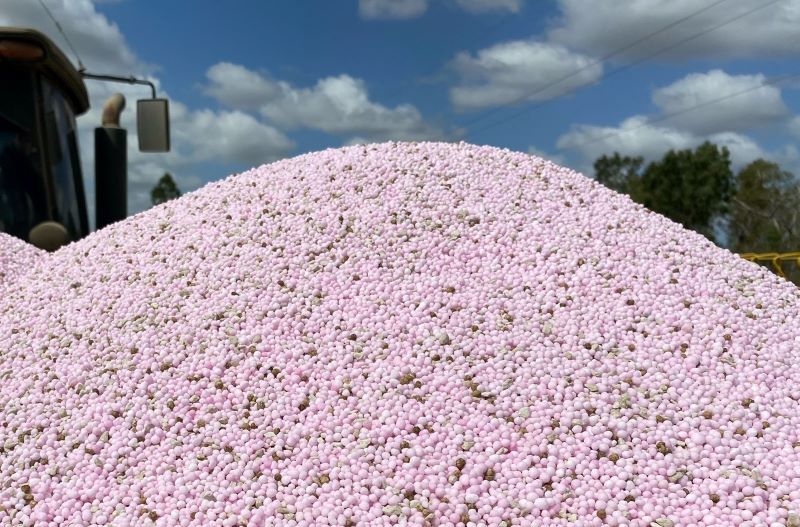Agronomic Insights

Often the biggest challenge in soil testing is collecting the sample in the first place. Having gone to the effort of collecting the sample, it’s worth considering whether additional nutrient or soil property tests across different depths will yield additional information to help improve fertiliser and soil amendment recommendations.
David McRae – IPF Technical Agronomist
Generally, surface samples will be tested with a Nutrient Advantage Laboratory E33 for cropping soils and E85 for pasture soils. Deeper samples often use an E37 test package. However, these tests do not reveal what nutrients may be available or what subsoil constraints may be limiting root exploration.
As Figure 1 (below) shows many crops develop a significant proportion of their final root volume in the middle 50% of their rooting depth. If subsoil constraints limit root growth or these zones are low in nutrients, final yields will be reduced. This is particularly important in seasons where the crop relies on moisture stored below 15-20 cm.

Figure 1: Root length density (cm/cm 3) for the whole root system at crop anthesis for 7 field crops (Osborne et al 2020).
Testing for subsoil constraints or immobile nutrients deeper in the soil profile does not need to be conducted every year. Developing a plan that allows this information to be gathered periodically will identify potential issues, quantify their current status and allow potential amelioration strategies and capital nutrient application to be factored into further programs.
For a 10-30 cm sample, it is worth considering adding a dispersion and slaking test, phosphorus, potassium and zinc.
Dispersion & Slaking (Loveday & Pyle)
Dispersion (sodicity) is a collapse of soil aggregates and a separation of clay particles. This is generally caused by too much sodium (Na) (ESP > 6%), potassium (K) and/or magnesium (Mg), with a lack of soluble calcium (Ca). Dispersion can also occur in soils with very low electrical conductivity (EC). The interactions of these factors produce a variety of situations where dispersion can occur.
When dispersion occurs, it limits root growth as the soil generally has lower porosity, higher bulk density and lower oxygen concentration. Under these conditions, water logging can be a larger issue, which then leads to a higher potential for denitrification of nitrogen.
A wide range of research is being conducted across the eastern states of Australia to identify ameliorant products and management practices that reduce the yield impacts of subsoil constraints. If you suspect you have subsoil constraint issues, identifying the issue is the first step in managing it. The Loveday & Pyle test (PHYS2) can be conducted on all samples.
Phosphorus and Potassium
Research into the availability of different phosphorus (P) soil pools for soil sampling depths of 10 cm and below in alkaline vertosol soils has been conducted for many years. Soil P dynamics are governed by complex interactions between soil physical and chemical characteristics, seasonal moisture availability, crop root distribution and root activity (Raymond et al. 2022).
Current testing methods for accessing phosphorus availability are Colwell-P, Phosphorus Buffering Index (PBI) and BSES-P on 0-10 cm and 10-30 cm samples. Even with new strategies to assess the soil P fertility of both the 0-10 and 10-30 cm layer, the number of samples being tested for P from the 10-30 cm layer is still low.
Data from the northern grains region suggest the P balance (fertiliser P minus crop removal) is negative. Wang et al. (2007) reported that approximately 50% of the net P removal occurred from below the top 10 cm, with the majority being withdrawn from the 10-30 cm depth at the “Colonsay” Long Term Site.

| Colwell P | Colwell P | BSES P | BSES P | P Balance | ||
|---|---|---|---|---|---|---|
| Time of Sample | P-Rate | 0-10 cm | 10-30 cm | 0-10 cm | 10-30 cm | kg/ha |
| Reference Plot (1985) | – | 17 | 3 | 117 | 82 | – |
| Sampling – 2022 | 0 | 12 | 4 | 43 | 31 | -329 |
| Sampling – 2022 | 10 | 35 | 14 | 81 | 49 | -93 |
| Sampling – 2022 | 20 | 44 | 17 | 120 | 56 | 168 |
Potassium is also starting to emerge in the cropped vertosols as an issue. Given the relative immobility of K and the amounts taken up by crops and redistributed to the surface, deeper layers are declining and need to be monitored.
Current interpretation for P & K from sampling depths of 0-10 cm and 10-30 cm in northern cropped vertosol soils is outlined by Lester et al 2022 (GRDC the-good, the-bad and the ugly).
Zinc
Zinc is another immobile nutrient that undergoes complex soil interactions which influence plant availability greatly. Zinc uptake by plants is continual through to grain development, but a deficiency has the largest influence on yield before head formation, growth stage Z30 in winter cereals. As crop development continues, yield reduction from zinc decreases.
Prajapati et al (2022) demonstrated that applying zinc on a responsive site multiple times during crop development maximised grain yield. The largest yield responses occurred during early crop development, before Z30 in winter cereals, but later applications also improved grain yields and protein contents.
Effective starter fertilisers such as Granulock Z® or Granulock Z Extra® promote zinc uptake and accumulation in plant tops and roots. If the surface soil layer dries, this may result in the zinc fertiliser enriched layer becoming inaccessible to plants as roots become inactive. As a result, plants will rely on zinc uptake from lower profile layers where moisture is present. The dependency of crops on this lower profile layer to supply zinc will be related to how often and how long the topsoil is dry.
Plant nutritional status can be monitored throughout crop development with plant tissue analysis and grain analysis at harvest.
To understand what is happening across your fields, testing P, K and Zn in the 10-30 cm layers will help quantify your situation and highlight looming issues. These tests can be easily added onto existing packages or talk to Nutrient Advantage Customer service 1800 803 453 about developing customer quote packages.
Further Information
David McRae on 0477 987 321 david.mcrae@incitecpivot.com.au
Bede O’Mara on 0417 896 377 bede.omara@incitecpivot.com.au
Jim Laycock on 0427 006 047 jim.laycock@incitecpivot.com.au
Resources
Download InsightDISCLAIMER Incitec Pivot Fertilisers manufactures and sources fertilisers from other suppliers. The fertiliser supply chain extends beyond the company’s direct control, both overseas and within Australia. Incitec Pivot Fertilisers hereby expressly disclaims liability to any person, property or thing in respect of any of the consequences of anything done or omitted to be done by any person in reliance, whether wholly or in part, upon the whole or any part of the contents of this article. This is a guide only, which we hope you find useful as a general tool. While Incitec Pivot Fertilisers has taken all reasonable care in the preparation of this guide, it should not be relied on as a substitute for tailored professional advice and Incitec Pivot Fertilisers accepts no liability in connection with this guide.
You might also be interested in these

Summer Crop
Deep and meaningful: Deep soil testing can help take the guesswork out of your nutrient plan
July / 2023

Horticulture, Pasture, Sugar, Summer Crop
Loveday & Pyle test – a comprehensive indicator of soil stability
February / 2023

Horticulture, Pasture, Sugar, Summer Crop, Winter Crop
Soil sampling for reliable results
February / 2025

Horticulture, Sugar, Summer Crop
Managing nitrogen in El Niño conditions
July / 2023

